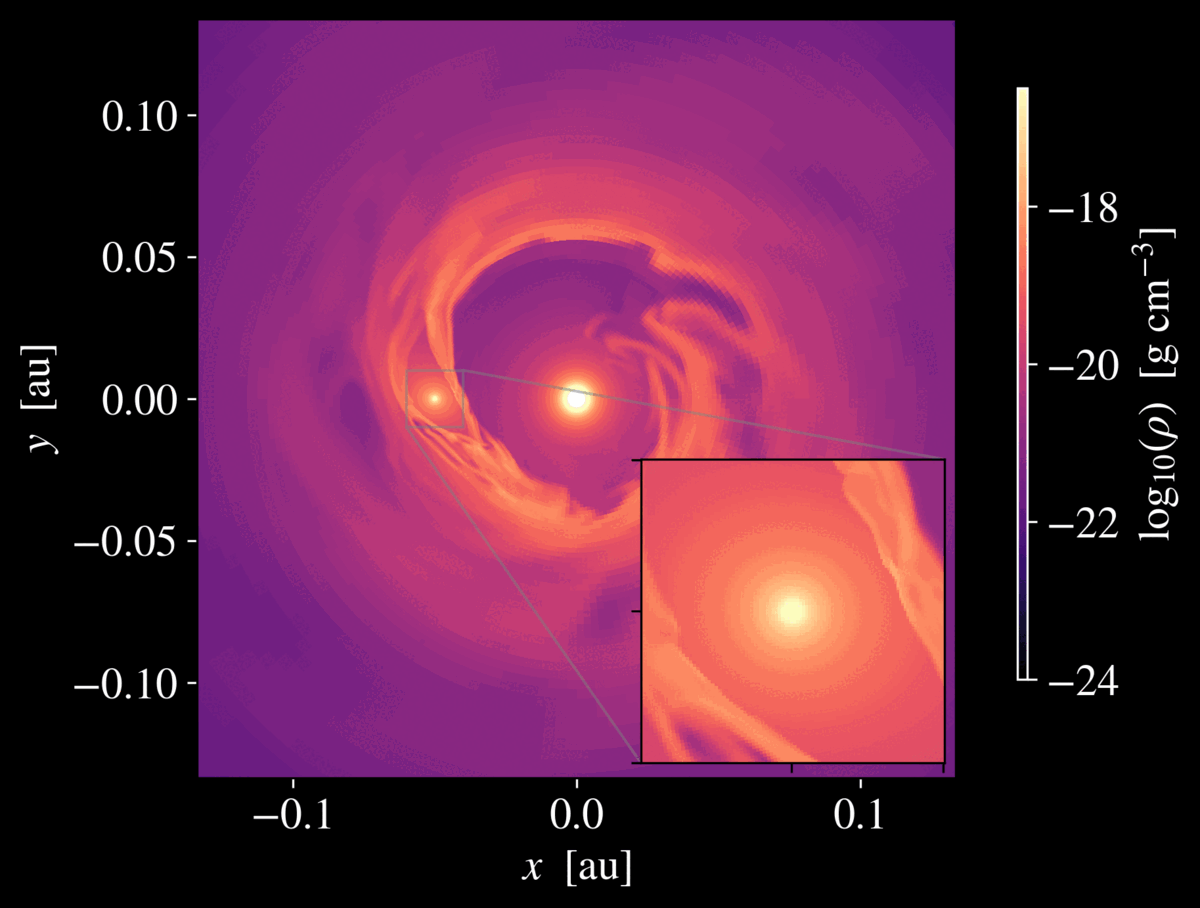Evaporating Exoplanet Atmospheres

Close-in exoplanets are exposed to an extreme environment: high, intense radiation and strong stellar winds. The high temperatures
lead, among other phenomena, to a hydrodynamic escape of the planet's atmosphere. This process has major implications for the evolution of
planets in this classification. Research is still in progress to understand the observed lack of short-period Neptune-sized planets, and atmospheric
mass loss is assumed to be the underlying process. Therefore, it is substantial to investigate further the nature of this fascinating phenomenon.
For example, the interaction between the planet's outflowing gas and the stellar wind can produce a variety of density patterns whose spectroscopic
signatures we can observe during transit. In my present project, we investigate how the interactions of planetary and stellar wind affect the
properties of the He-1083 nm line . Past observations and studies have shown that this absorption line is a powerful tracer for evaporating
atmospheres. We focus in particular on an anisotropic escape from a tidally-locked planet caused by its day-night-side temperature contrast.
We model with 3D hydrodynamic simulations how the stellar wind shapes the planetary outflow and compare isotropic with anisotropic temperature
structures of the planet.
Based on the obtained density structures and a radiative transfer analysis, we generate synthetic transmission spectra and light curves of the
He-1083nm line. For anisotropic structures, we find a blue shift of several km/s in the helium line compared to the isotropic case. Furthermore, we can
find a correlation of temperature contrast and shift velocity . The helium line shape is also affected, as the egress shows a higher absorption
for a stronger day-night temperature difference. Assuming the day-night temperature gradient as the primary cause of the observed blueshifts in the He-1083~nm line,
we can make use of the correlation found to constrain the temperature gradient of the upper atmosphere. Interested in the details of this analysis?
Have a look at our paper Nail et al. (2024).
The advantage of our approach is that we remain agnostic about the wind-driving mechanisms. Therefore, we only parameterize the wind instead of
simulating it in a self-consistent way, which allows us to cover a wide range of parameters.
If you're interested in the simulation setup, you can find detailed information in the paper by MacLeod & Oklopčić (2023). Stay tuned for the forthcoming publication of our work on anisotropic outflow!